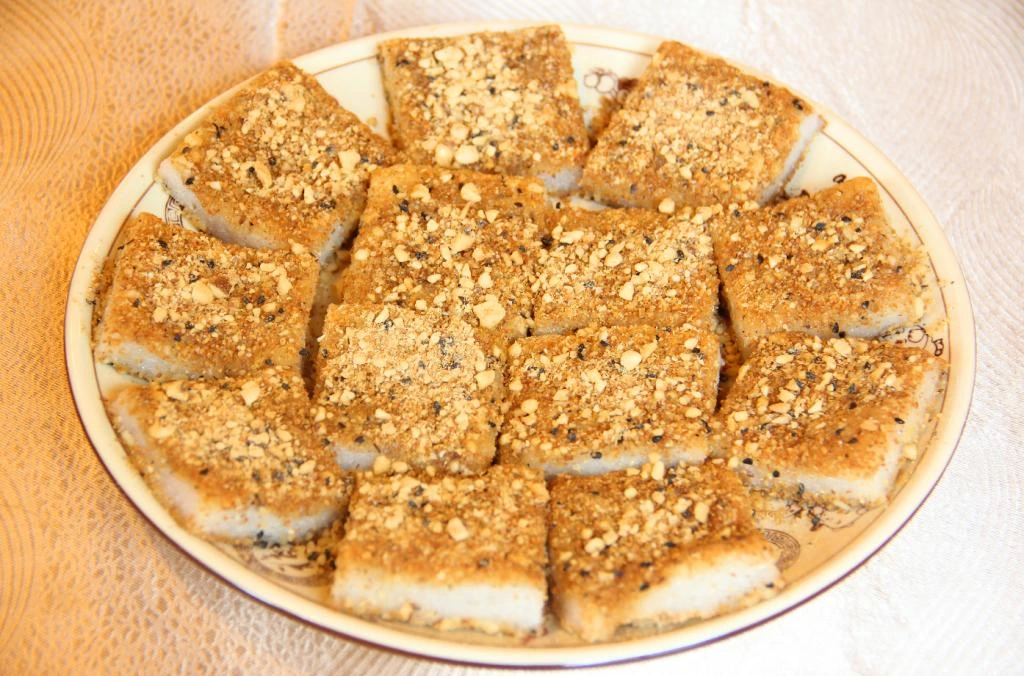The Delectable Qi Fo Gong Bing: A Culinary Gem from Guangyuan, 사천
소개:
식품 감정가로서, I have the pleasure of introducing you to a culinary delight that hails from the beautiful region of Guangyuan in Sichuan Province, 중국 – the Qi Fo Gong Bing. This exquisite pastry is not just a treat for the palate but also a testament to the rich cultural heritage of the area. Known as a “Seven Buddhas Tribute Cake” 또는 “七佛贡饼” 중국어로, it has a history that dates back to the Tang Dynasty and is renowned for its unique texture and flavor.
기원과 문화적 배경:
The Qi Fo Gong Bing has a fascinating story that intertwines with the region’s religious and historical past. It is said that this pastry was first offered as a tribute to the seven Buddhas by the local people of the Qi Fo Temple in Guangyuan. 시간이 지남에 따라, it became a symbol of reverence and respect, and its production was passed down through generations, each adding their own twist to the recipe while maintaining its traditional essence.
Ingredients and Making Process:
The Qi Fo Gong Bing is made with a careful selection of ingredients that contribute to its distinct taste and texture. The primary components include high-quality wheat flour, local walnuts, 설탕, and a touch of Sichuan peppercorns for a hint of spice. The dough is meticulously prepared, ensuring that it is neither too dry nor too wet, and then filled with a blend of crushed walnuts and sugar. The pastries are then baked to perfection, resulting in a golden brown crust that is both crispy and flaky.
맛과 질감:
The Qi Fo Gong Bing is characterized by its酥脆不腻 (crispy and not greasy) 조직. The outer crust shatters with a gentle bite, revealing a soft, slightly sweet filling that is rich in walnut flavor. The hint of Sichuan peppercorn adds a subtle warmth that complements the sweetness, creating a balanced taste that is both satisfying and addictive.
모습:
시각적, the Qi Fo Gong Bing is a beautiful pastry. It is often round or square, with a golden brown color that glimmers with a sheen of oil from the baking process. The surface is marked with delicate patterns, often resembling traditional Chinese motifs, which add to its aesthetic appeal. Each piece is a miniature work of art, inviting the eye as much as the palate.
대표 요리 및 요리:
While the Qi Fo Gong Bing stands on its own as a delectable snack, it can also be incorporated into various dishes. It pairs well with a cup of strong black tea or a fragrant cup of jasmine tea, making it a popular choice for afternoon tea. 또한, it can be served as part of a dessert course in a traditional Sichuan meal, complementing the spiciness of the dishes with its sweet and nutty flavors.
요리 특성:
The Qi Fo Gong Bing is a shining example of Sichuan’s culinary prowess. Its characteristics include a balance of sweetness and spice, a texture that is both crisp and tender, and an aroma that is rich with the scent of walnuts. It is a pastry that respects tradition while offering a modern twist, making it a favorite among locals and visitors alike.
결론적으로, the Qi Fo Gong Bing is more than just a pastry; it is a piece of Guangyuan’s history, a symbol of its culture, and a testament to its culinary tradition. For those who have the opportunity to taste this delicacy, it is an experience that is both satisfying and memorable, a true journey through the flavors of Sichuan.
